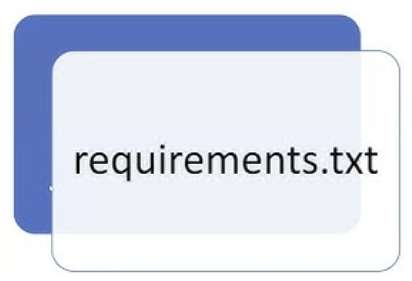Install Packages with pip and requirements.txt in Python – A Complete Guide

Prakash Bhandari (PB)Loading..
Published , Last updated
If you're working with Python, managing dependencies is crucial for maintaining clean and reproducible environments. Two essential tools for this are pip, Python’s package installer, and requirements.txt, a file that helps you install multiple packages at once.

A requirements.txt file is a plain text file used in Python projects to list all the dependencies (packages and their versions) that the project needs to run. It allows developers to install all required packages with a single command using pip.
Here, I’ll cover how to install packages with pip and how to use and write a requirements.txt file. Whether you’re a beginner or looking to automate your Python workflows, this post is for you.
What is pip?
pip is the default package installer for Python. It allows you to install packages from the Python Package Index (PyPI) and other repositories. If you're using Python 3.4 and above, pip is already included.
Basic pip Commands
pip install package-name # Install a package
pip uninstall package-name # Uninstall a package
pip freeze # List installed packages
pip install -r requirements.txt # Install from a requirements file
How to Install Packages with pip
Installing a single package is simple. For example, to install requests, run:
pip install requestsTo install a specific version:
pip install requests==2.28.1To upgrade a package:
pip install --upgrade requestsYou can also install packages globally or inside a virtual environment (recommended for projects). To create a virtual environment:
python -m venv venv
source venv/bin/activate # Linux/Mac
venv\Scripts\activate # Windows Then install your packages using pip within this environment.
How to Write requirements.txt
A requirements.txt file lists all your Python project's dependencies. This makes it easier for others (or future you) to set up the project with a single command.
Creating a requirements.txt File
To generate a requirements.txt from your current environment:
pip freeze > requirements.txtThis creates a file like:
requests==2.28.1
flask==2.2.5
numpy==1.24.3Each line contains a package name and its version. You can edit this file manually or keep it generated via pip freeze.
Writing requirements.txt Manually
You can also write it yourself:
requests
flask>=2.0
numpy==1.23.0This allows flexibility:
| Operator | Meaning |
|---|---|
~= | Compatible release clause (e.g., ~=1.4 means >=1.4, <2.0) |
== | Exact version match |
!= | Exclude specific version(s) |
<=, >= | Inclusive comparison |
<, > | Exclusive comparison |
=== | Arbitrary (often exact string) equality |
You can even include packages from GitHub or private URLs:
git+https://github.com/psf/requests.gitOr point to local directories or wheels:
-e ./my-local-package/
Installing from requirements.txt
Once you have a requirements.txt, anyone can install all dependencies with:
pip install -r requirements.txtThis ensures a consistent environment across different machines or deployments.
Reference document: https://www.python.org/dev/peps/pep-0440/#version-specifiers
How to Update requirements.txt
To update your dependencies:
- Activate your virtual environment.
Upgrade your packages manually or with a tool like
pip-review:pip install pip-review pip-review --autoRegenerate
requirements.txt:pip freeze > requirements.txt
Best Practices for Managing Dependencies
- Use Virtual Environments
Always use a virtual environment to avoid global conflicts. - Keep requirements.txt in Version Control
Track your dependencies along with your codebase in Git. - Use separate files for production and development
You can split files like:requirements.txt– for productiondev-requirements.txt– for testing, linters, etc.
- Pin Versions
Lock versions (==) to avoid unexpected issues when packages update. - Regenerate Regularly
After updates, regeneraterequirements.txtwithpip freeze.
Conclusion
Using pip and requirements.txt effectively can save you time, avoid dependency issues, and make your Python projects more shareable and reproducible. Whether you’re working on a small script or a large app, managing packages smartly is a must.